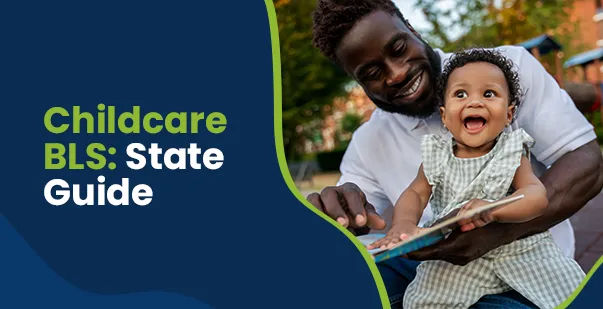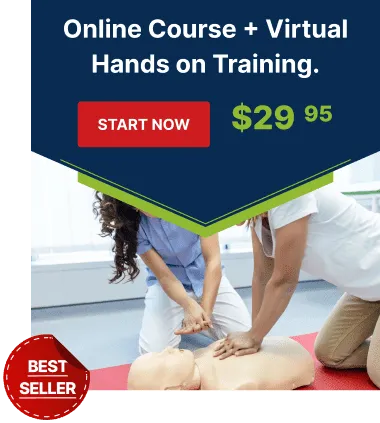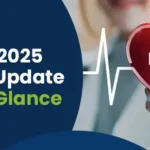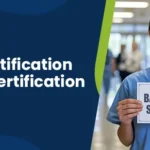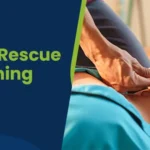Table of Contents:
- Introduction
- Why Does BLS Certification Matter in Childcare?
- What Are the State-by-State BLS Certification Requirements for Childcare Providers?
- What Are the Penalties for Not Being BLS Certified?
- Do Part-Time Childcare Workers Also Need BLS Certification?
- Be Ready to Save a Life by Getting BLS Certified!
As a childcare center teacher, you may face emergencies such as a child suddenly starting to choke on a snack. Their face turns red, and they can’t breathe. Instead of panicking, you act fast. You have been trained in Basic Life Support (BLS), so you step in with confidence. You deliver firm back blows and help clear the airway. Within seconds, the child is breathing again.
That’s the power of being BLS certified. According to the U.S. Bureau of Labor Statistics, more than 942,000 childcare workers are employed across the country as of 2023. Many of them are responsible for infants and toddlers who are especially vulnerable in emergencies. With so many children in their care, many states mandate BLS certification for childcare workers. This guide will explain why and what the state laws are for childcare workers.
Why Does BLS Certification Matter in Childcare?
BLS certification for childcare workers teaches how to perform cardiopulmonary resuscitation (CPR), use an automated external defibrillator (AED), and give rescue breaths correctly. However, without proper training, caregivers may panic or make severe mistakes during an emergency.
In the United States, most states require childcare providers to be licensed or registered to ensure the safety and well-being of children. Licensing rules in the U.S. also require mandatory health and safety training, such as up-to-date CPR and BLS for babysitters and daycare providers.
Real-life examples that show why BLS matters:
1. Louisiana Daycare CPR Save
A daycare worker in Louisiana, who was also a trained paramedic, acted quickly when a 6-year-old child went into cardiac arrest. She immediately started CPR and continued until emergency responders arrived. This shows how knowing CPR can make the difference between life and death in a childcare setting.
2. South Florida Near-Drowning Cases
In South Florida, two young children nearly drowned in separate incidents. In both cases, quick CPR by bystanders helped bring the children back to life before paramedics arrived. These incidents prove that even non-medical people with BLS training can save lives.
3. North Carolina Daycare Tragedy
In North Carolina, a toddler died at a daycare during a medical emergency where one staff member’s CPR certification had expired. The center was cited for not meeting training requirements. This tragedy highlights why it’s critical to keep BLS certification current, as lives depend on it.
Read More: Enhancing Career Opportunities with CPR Certification
What Are the State-Wise BLS Requirements for Childcare Providers?
Understanding daycare BLS requirements by state is important for anyone working in childcare. Each state sets its own rules about CPR and first aid training, especially for those caring for infants and young children. The state-specific requirements for childcare provider BLS training is given below:
1. California
Licensed childcare staff must complete pediatric first-aid and CPR training. First-time center directors/providers need 4 hours of pediatric CPR/AED and 4 hours of pediatric first-aid (including infant/child CPR and choking response), i.e., 8 total hours of training. Every 2 years, staff renew with another 8-hour course.
2. Texas
Every daycare caregiver and the center director must have a current pediatric first-aid certificate (with rescue breathing and choking care) and a pediatric CPR certificate. A new hire can’t be left alone with children until at least one person on site has current CPR. (If one person on duty is certified, others may complete CPR training soon after hire.) Courses must include infant, child, and adult CPR.
3. Illinois
Childcare centers must have at least one person on site at all times who is certified in first aid, CPR (infant/child/adult), and the Heimlich maneuver (method used for choking relief). In fact, Illinois regulations require two staff on duty with current first-aid and CPR training whenever children are present, and CPR certification must cover all ages (both infant and adult).
4. New York
State rules require that each program (centers and family day cares) have at least one staff member on duty who is certified in both CPR and first aid during all operating hours. This ensures someone can respond immediately. In practice, New York expects all caregivers to be trained (and many do 2-person rescue CPR courses with AED).
5. New Jersey
Licensed centers must have at least two staff on site with current pediatric BLS certification for staff at all times. These staff must be able to do infant/child/adult CPR plus choking relief. This state rule ensures adequate coverage in case one rescuer is busy. The regulations specify that training must include hands-on skill practice, not just online study.
6. Colorado
Both centers and licensed family child care homes must meet state CPR/first-aid rules. For example, Colorado requires that family child care home applicants complete approved first-aid and CPR training before their initial license visit. Center staff likewise must complete state-approved pediatric first aid/CPR training as part of licensing.
7. Florida
The Florida Department of Children and Families requires that childcare facilities maintain a certain number of personnel with current first-aid and CPR certification on site at all times. By state rule, “the facility shall maintain a specific number of child care personnel with current CPR certification and first aid training on site at all times children are in care”. In other words, even if not every single teacher is certified, enough staff must be certified that someone is always available.
8. Pennslyvania
New regulations make pediatric training mandatory. Pennsylvania now requires all licensed childcare staff to complete pediatric first aid and pediatric CPR training before they can supervise children alone. This follows the federal Child Care and Development Block Grant Act, which mandates pediatric emergency training for all childcare providers.
Read More: The Ultimate BLS Cheatsheet (+Infographics)
What Are the Penalties for Not Being BLS Certified?
Childcare licensing rules are strict. If a center does not meet the CPR/first-aid requirement, it can face serious consequences. These penalties vary by state, but in general, they will include:
- Citations and Fines: Facilities will be fined daily until the issue is fixed. In California, fines often start around $50 per day and reach up to $150.
- License Suspension or Revocation: Repeated or severe violations can cause a center to lose its license.
- Legal Action: In some states, operating without the required license can even be treated as a misdemeanor.
- Corrective Action Plans: Inspectors may give a chance to fix the issue quickly, such as requiring staff to complete overdue training.
In very serious cases, especially if a child is harmed, penalties and fines can be much higher.
Do Part-Time Childcare Workers Also Need BLS Certification?
Anyone who cares for children (even part-time or as a substitute) should have up-to-date CPR/first-aid training or BLS certification for childcare workers. Some states phrase rules in terms of “at least one qualified person on site”, but that doesn’t mean you can ignore training for others.
In practice, any teacher or caregiver who might need to respond to an emergency should be certified, regardless of how many hours they work. Some states explicitly require substitutes to have credentials. Even where rules only say “one person on duty” must be certified, it’s wise to have as many staff trained as possible to ensure coverage.
Be Ready to Save a Life by Getting BLS Certified
Working with children means being ready for anything, even emergencies. A choking child, a drowning incident, or a sudden collapse can happen anytime. That’s why BLS certification for childcare workers is more than just a rule.
Across the U.S., most states require it, and for good reason. As we saw in real-life cases, quick action from trained caregivers can save a child’s life. Whether you work full-time or part-time, getting BLS certified shows you’re prepared to protect the children in your care. Don’t wait for a crisis. Sign up for a BLS certification course today!
